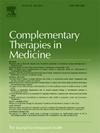保健气功对颈椎病的影响:系统综述。
IF 3.5
3区 医学
Q1 INTEGRATIVE & COMPLEMENTARY MEDICINE
引用次数: 0
摘要
目的:运动疗法是颈椎病预防和康复中应用广泛的干预手段。作为中国传统运动疗法的一种独特形式,健康气功已被经验验证,对17个生理系统都有有益的影响,对肌肉骨骼疾病的治疗效果尤其显著。本系统综述旨在批判性地评价健康气功对颈椎病的影响。方法:根据文献检索原则,检索自出版日期至2024年11月发表的文献。使用的数据库是中国国家知识基础设施、Scopus、PubMed、Web of Science和EBSCOhost (SPORTDiscus)。使用物理治疗证据数据库(PEDro)量表评估研究质量。搜索过程使用系统评价和荟萃分析首选报告项目(PRISMA)2020进行记录。结果:从702项研究的初始池中总共选择了10项研究,包括656名参与者。这10项研究的PEDro得分从7到8分不等。研究结果表明,保健气功对颈椎病的治疗作用主要体现在减轻颈部疼痛、改善颈椎功能障碍、恢复颈椎曲度和增强颈椎活动度四个关键方面。具体而言,在疼痛缓解方面,视觉模拟量表(VAS)评分平均下降2.8至4.15分,而颈部残疾指数(NDI)评分从6.10显著下降至1.4分。干预后,颈椎曲度异常发生率下降10.97%,颈椎活动度(CROM)平均改善19.78°~ 67.4°。此外,根据中医诊疗标准,有5项研究报告总有效率超过90%,最高达97.14%。短期干预结果显示,八段锦的复发率为0%,而易锦经和五秦饮的复发率为11.2% ~ 13.33%。结论:健康气功作为一种以运动为基础的干预,不仅可以缓解颈椎病相关疼痛,改善颈椎功能障碍,还可以促进颈椎曲度恢复,增强颈椎活动度,从而解决颈部功能的局限性。然而,目前的研究在人群、颈椎病分类、干预设计、结局评价标准等方面存在一定的局限性和研究空白。因此,迫切需要制定更有针对性的干预策略,建立规范化的疗效评价体系,并开展深入的机制研究,进一步验证健康气功在颈椎病治疗中的临床疗效和实际应用。本文章由计算机程序翻译,如有差异,请以英文原文为准。
Effects of health qigong on cervical spondylosis: A systematic review
Aim
Exercise therapy is a widely utilized intervention for the prevention and rehabilitation of cervical spondylosis. As a distinctive form of traditional exercise therapy in China, Health Qigong has been empirically validated to exert beneficial effects across 17 physiological systems, with particularly pronounced efficacy in addressing musculoskeletal disorders. This systematic review aims to critically evaluate the impact of Health Qigong on cervical spondylosis.
Methods
According to the literature search principles, works published from the publication date to November 2024 were searched. The databases used were the China National Knowledge Infrastructure, Scopus, PubMed, Web of Science, and EBSCOhost (SPORTDiscus). The study quality was evaluated using the Physiotherapy Evidence Database (PEDro) scale. The search process was documented using the Preferred Reporting Items for Systematic Reviews and Meta-Analysis (PRISMA)2020.
Results
A total of 10 studies were selected from an initial pool of 702 studies, comprising 656 participants. The PEDro scores of the 10 studies ranged from seven to eight. The findings indicate that Health Qigong exerts its therapeutic effects on cervical spondylosis primarily in four key areas: alleviating neck pain, improving cervical dysfunction, restoring cervical curvature, and enhancing cervical mobility. Specifically, for pain relief, the Visual Analog Scale(VAS) scores showed a mean reduction of 2.8–4.15 points, while the Neck Disability Index (NDI) scores significantly decreased from 6.10 to 1.4. And after intervention, the prevalence of abnormal cervical curvature decreased by 10.97 %, cervical range of motion (CROM) improved by 19.78° to 67.4° on average. Furthermore, according to the Traditional Chinese Medicine (TCM) Diagnostic and Treatment Criteria, five studies reported an overall effectiveness rate exceeding 90 %, with a maximum of 97.14 %. Short-term intervention outcomes indicated that Ba Duan Jin showed a recurrence rate of 0 %, whereas interventions using Yi Jin Jing and Wu Qin Xi exhibited recurrence rates ranging from 11.2 % to 13.33 %.
Conclusion
As an exercise-based intervention, Health Qigong not only helps alleviate cervical spondylosis-related pain and improve cervical dysfunction but also promotes the restoration of cervical curvature and enhances cervical mobility, thereby addressing limitations in neck function. However, current research exhibits certain limitations and research gaps in areas such as populations, cervical spondylosis classification, intervention design, and outcome assessment criteria.Therefore, there is an urgent need to develop more targeted intervention strategies, establish standardized outcome evaluation systems, and conduct in-depth mechanistic studies to further validate the clinical efficacy and practical application of Health Qigong in the management of cervical spondylosis.
求助全文
通过发布文献求助,成功后即可免费获取论文全文。
去求助
来源期刊

Complementary therapies in medicine
医学-全科医学与补充医学
CiteScore
8.60
自引率
2.80%
发文量
101
审稿时长
112 days
期刊介绍:
Complementary Therapies in Medicine is an international, peer-reviewed journal that has considerable appeal to anyone who seeks objective and critical information on complementary therapies or who wishes to deepen their understanding of these approaches. It will be of particular interest to healthcare practitioners including family practitioners, complementary therapists, nurses, and physiotherapists; to academics including social scientists and CAM researchers; to healthcare managers; and to patients. Complementary Therapies in Medicine aims to publish valid, relevant and rigorous research and serious discussion articles with the main purpose of improving healthcare.
 求助内容:
求助内容: 应助结果提醒方式:
应助结果提醒方式:


